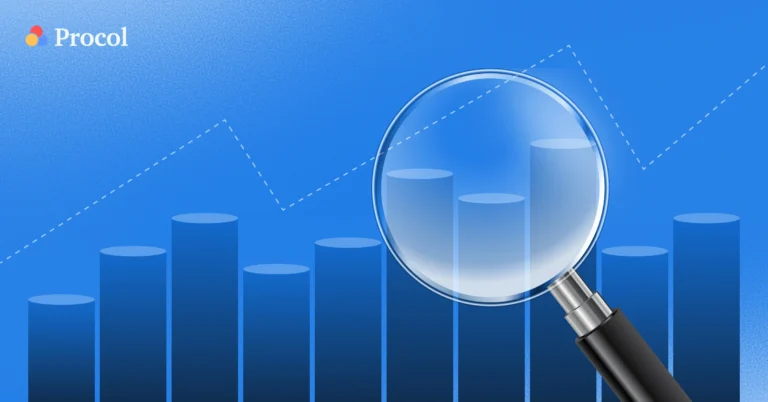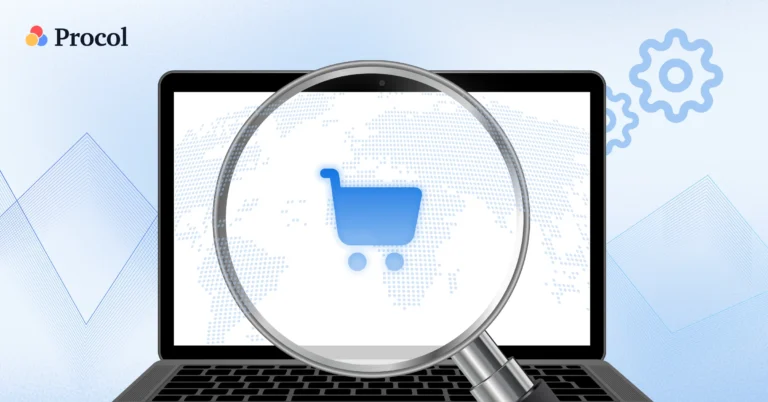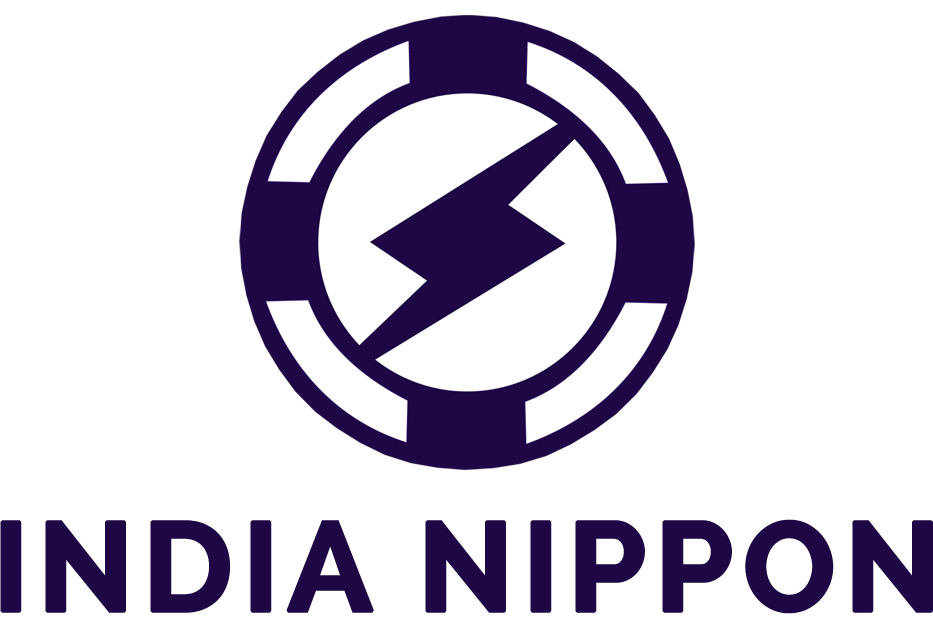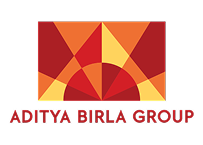Nyla Uddin • December 2, 2025
Procurement challenges: how to navigate them with solutions in 2025

Last update: August 27, 2025

Buying for a business requires research, planning, and good execution. It’s not a complicated process, but it can get difficult if you don’t have the right tools. There are quite a few things that can go wrong in the process, from choosing the right suppliers to making sure costs remain within budget. In fact, a recent study found that 60% of business leaders identify a lack of transparency between finance, procurement, and suppliers as a major issue. They also found that resolving these issues could result in potential savings of 11–20%. This blog will take you through the most common procurement challenges businesses face today, why they happen, and what you can do to solve them. And, if you’ve struggled with delays or overspending for a long time, this blog will introduce the best-ever solution to overcome those challenges.
What are procurement challenges?
Procurement challenges are the difficulties businesses face when buying goods or services. These can appear at any stage, like picking the right suppliers, controlling costs, or handling payments across vendors. And since they’re often unpredictable, they can cause delays, poor product quality, and unnecessary spending. These procurement problems can significantly impact a company’s profits and slow its overall process down, right from sending a request to making a purchase. However, if businesses spot these issues earlier on, it’s easier to solve them, save time and money, and improve supplier relationships.
What makes procurement difficult?
Procurement is hard because there’s a lot to manage all at once. For example, there’s pressure on teams to find the right suppliers, follow rules, check quality, and handle payments. And if there’s even the slightest mistake, it can significantly slow down processes and cause delays in the supply chain operations. However, as the years have passed, procurement challenges have become even more difficult due to the fast-changing markets, increasing demand, labor shortages, and global issues.
In the procurement process, there are also challenges related to sourcing. To keep up with the dynamic market and preferences, procurement teams need to do ample research in order to find the best for the company. These include picking the most reliable vendors and cross-checking with them to ensure they deliver on time. Teams need to stay flexible, communicate well with one another, and plan ahead for any unseen issues. If they don’t do this, small problems can become costly issues very fast. That’s why many companies now want to improve how they buy things to avoid mistakes, save on extra costs, and keep their business running smoothly. Weighing procurement problems and solutions is important in this process, as it helps businesses make informed decisions.
What are the biggest challenges in procurement?
The biggest procurement challenges in today’s industry are handling risks like supply problems, keeping costs low but quality high, following industry rules, managing global shipping, finding the right teams, and learning to use new technology. Here are the challenges in e procurement explained further.
1. Risk management in procurement
Usually, the biggest cause of procurement challenges is risk management. These are risks like supplier problems, price changes, or delays in delivery. Even if these things don’t happen very often, they can interrupt the entire process and stop your business from running smoothly.
2. Lack of visibility in procurement processes
When you don’t have a clear view into what’s happening in your buying process, it causes many procurement problems, like delays and unnecessary extra costs. Without direct visibility, you’re guessing instead of making decisions, and so, making more mistakes that will cost you.
3. Supply chain disruptions
Events like natural disasters, political conflicts, or pandemics can break the flow of goods. All of these events heavily contribute to global procurement challenges, as they cause massive delays and a lot of extra spending that impact your business.
4. Contract management issues
It’s hard to keep track of multiple contracts. It’s even more difficult when prices keep changing or when suppliers don’t meet terms. When contracts are handled poorly, it impacts the company’s budget and leads to lost chances to fix bad deals.
5. Resistance to adopting new technology
Even though technology helps make everything faster, many employees and suppliers hesitate to use these esourcing tools. So, when things are constantly done manually, it slows progress down and creates challenges in e-procurement because people stick to old ways instead of using faster, better methods.
6. Problems managing suppliers and vendors
It’s not easy to find suppliers that meet your exact needs. The vendors you choose need to perform well and be able to supply the best goods to you. When suppliers aren’t managed well, quality gets compromised, and shortages are more common. These are one of the biggest purchasing challenges.
7. Shipping and delivery issues
Shipping and moving goods across countries is complicated. Every country has different rules, customs, and terms for delivery. Additionally, poor transportation can cause long delays, heavy fines, or even lost shipments, making global sourcing very difficult.
8. Lack of access and transparency
Procurement data is hard to keep track of as it is. But when it’s scattered across many files or emails, it’s harder to tell whether the numbers are accurate. Also, catching problems earlier in the process becomes difficult, too. This can lead to businesses spending more than they need to and impact supplier relationships.
9. Dark purchasing or maverick spending
Sometimes people buy things without checking with managers or outside the company’s official process. This, of course, means a lot of money wasted and total loss of control. Reports show that maverick spending can make up about 20% of a company’s indirect procurement costs.
10. Inaccurate or poor data
When information isn’t double-checked or updated, it leads to bad buying decisions like too much or too little stock. Here, it’s very important that data remains as accurate as possible to avoid expensive mistakes in procurement.
11. Tight budgets
If businesses don’t have a very large budget, it may be hard to buy the best products or invest in helpful technology. The pressure to have a vast budget is a very common sourcing challenge that procurement teams everywhere tend to face.
12. Difficulty in finding the right talent
It’s hard to find and keep skilled workers who actually have experience in the procurement industry and understand how modern processes work. If businesses don’t have the best people, tasks take longer and there’s a higher chance of errors, which is one of the biggest challenges in procurement.
13. Compliance and regulatory issues
Following different laws and rules in various countries is tricky, especially for businesses working in multiple countries. Breaking rules can lead to fines or stopped shipments, which is an added stressor for global procurement teams.
14. Cybersecurity and threats to data safety
When procurement goes digital, it faces risks like hacking or data theft. So, protecting sensitive supplier and payment data is important to avoid financial loss and damage to vendor and company trust.
15. Sustainability and environment-friendly sourcing
Customers want products that are made responsibly and with care for the environment. The rush to meet these demands can slow down the usual sourcing processes and add new challenges, but it is becoming more important every day.
What are the most effective solutions to combat procurement challenges?
Procurement challenges aren’t the end of the world. In fact, there are many ways to fix common procurement problems, like using one platform, automating tasks, building better supplier ties, and reducing risks by following clear rules and using data.
1. Focus on building strong relationships with suppliers
Good relationships with suppliers help reduce risks, especially in global procurement challenges. When businesses and suppliers communicate regularly, it makes it easier to handle pricing issues, negotiate contracts, handle late deliveries, and sudden demand changes.
2. Go digital and use software to reduce manual work
Digitalization procurement can address issues such as slow processes and missing data. Tell your team about the benefits of using this software and how it helps speed up sourcing, improve accuracy, and cut costs. Then, train them enough so that they can leave the manual tasks to software and focus on other activities.
3. Keep a close eye on and control maverick spending
Unapproved purchases can eat into budgets. But when there’s a specific system in place to approve these purchases, it makes things easier. Approval software flags any off-contract spending and fixes common procurement problems related to dark spending.
4. Improve how you predict demand
Poor planning is one of the biggest challenges in procurement. If you don’t assess your current needs and find out the best products for you, you risk being unprepared and choosing any vendor you find. Use data and past trends to better predict what you’ll need. This helps avoid both overbuying and running out of supplies.
5. Keep your procurement process simple and organized
When teams use different ways to buy things, it causes confusion and errors. A great solution for this is setting one standard method for procurement. Using platforms like Procol gives you a customizable dashboard to work from. This way, procurement contract management becomes easier, and you’re able to track approvals and delivery times seamlessly.
6. Simplify your vendor onboarding process
Don’t make vendor onboarding a long and confusing process. It causes delays and can even lead to the supplier becoming frustrated. Make it easier for suppliers to sign up and send documents. This helps fix sourcing challenges and form new partnerships.
7. Monitor supplier performance regularly
You should always trust your suppliers, but you can also avoid minor quality and delivery issues by checking how your suppliers are doing. To do this, use scorecards or simple reviews to identify problems so that you can reduce procurement risks.
8. Go for multi-sourcing when possible
Relying on just one supplier is risky. If something goes wrong or they’re unable to meet deadlines, that puts you in a difficult position. Consider working with more than one vendor for some orders so that you have more options. This is more helpful in challenges in global sourcing and logistics.
9. Train your teams with the skills they need
Training helps solve the issue of finding the right team. Sometimes, you don’t need to replace them; you just need to equip them with the right skills. Teach your team how to use tools, follow rules, and talk to suppliers regularly so that they can stay on the same page.
10. Set clear procurement policies
When teams don’t know the rules for your company’s procurement process, there’s a chance that they might overspend or pick poor-quality vendors. A simple, written policy fixes many purchasing challenges and keeps everyone aware.
11. Use live data for smarter decisions
Real-time dashboards help you see procurement challenges as they happen. This way, you can act fast and fix issues related to delivery, cost, or quality before they start to disrupt the procure-to-pay process. Procol’s dashboard displays live updates on every part of your procurement process, whether it’s the number of vendors, pending approvals, or auction status.
12. Monitor prices and save costs
When prices rise or the economy is unstable, procurement teams should keep a close eye on market prices and adjust plans. Additionally, they can work with vendors to get discounts based on facts and improve the company’s inventory to save money.
How Procol helps businesses overcome procurement problems
Procol helps businesses solve the real, everyday procurement challenges they face. Whether it’s delays, lack of quality control, or overspending, our AI-powered platform handles everything from requisition to payment.
With our automation, teams don’t have to chase after different people or departments for approval or sift through tons of emails or outdated spreadsheets. Our platform’s configurable approval workflows speed up the entire process while ensuring you comply with all policies. This removes delays and gives procurement teams more control without slowing them down.
The main pain point of this industry is that procurement can break down quite easily without proper visibility. Procol fixes that. Our real-time dashboards are customized to your business type and show you who’s buying what, from whom, and at what cost. This transparency helps businesses identify savings, stop maverick spending, and make faster decisions based on data.
Managing vendors is also simpler. It brings all supplier data and performance history into one place, making it easy to compare, evaluate, and choose the best partners for every category.
Most importantly, our software is more than just a helpful tool; it’s the modern procurement system to help businesses overcome challenges in global sourcing, increase their speed, efficiency, and see real results.
Conclusion
While procurement challenges may feel overwhelming and impossible to handle, they can be tackled with the right process in place. As a business, you need to take the right steps, like better planning, stronger vendor relationships, considering procurement problems and solutions, and a smart platform like Procol to help you out. With these solutions, your team can eliminate challenges before you even know they’re there. The smart platform is your modern-day proof that every challenge can be fixed.
Frequently asked questions
What are the main challenges faced in procurement?
There are many challenges in procurement, like managing risks, fixing inaccurate data, following contract rules, handling supply chain problems, and resolving supplier issues.
What are the five major issues in the end-to-end procurement process?
The five main issues in the end-to-end procurement process are:
- Lack of visibility.
- Slow or inefficient steps.
- Weak supplier relationships.
- Poor risk management.
- Little or no use of technology.
What is the most significant challenge for a procuring organization?
The biggest challenge for a procurement team is often building good supplier relationships while also managing risks well.
Which part of procurement is the most difficult?
While there is no specific part that is considered the hardest, some businesses may find choosing and managing the right suppliers to be the most challenging.
What common weaknesses exist in procurement practices?
Common weaknesses in procurement include poor visibility of spending, slow processes, weak supplier management, quality problems, and bad risk planning.
What does poor procurement look like?
Poor procurement happens when buying practices are slow, resources are wasted, and processes don’t have any real results.
Which factors affect e-procurement?
E-procurement success depends on many things, like the company’s internal setup, the technology used, and outside factors.
What common risks come with e-procurement?
E-procurement offers many benefits, but it also comes with risks like hacking and data privacy breaches.
Schedule a Demo
We’d love to hear from you. Please give us a call on +1 (209) 305-4922.
Explore more from Procol
Discover expert tips, how-to guides, industry insights, and the latest procurement trends.

The complete guide to spend analysis in procurement | Procol
In today’s business environment, understanding where your money goes is just...

eSourcing strategy: Maximizing savings & efficiency in procurement
The procurement function is a central pillar of success, continuously managing...

Supplier relationship management strategies : The complete guide
In today’s complex business environment, successful operations depend heavily on strong,...








